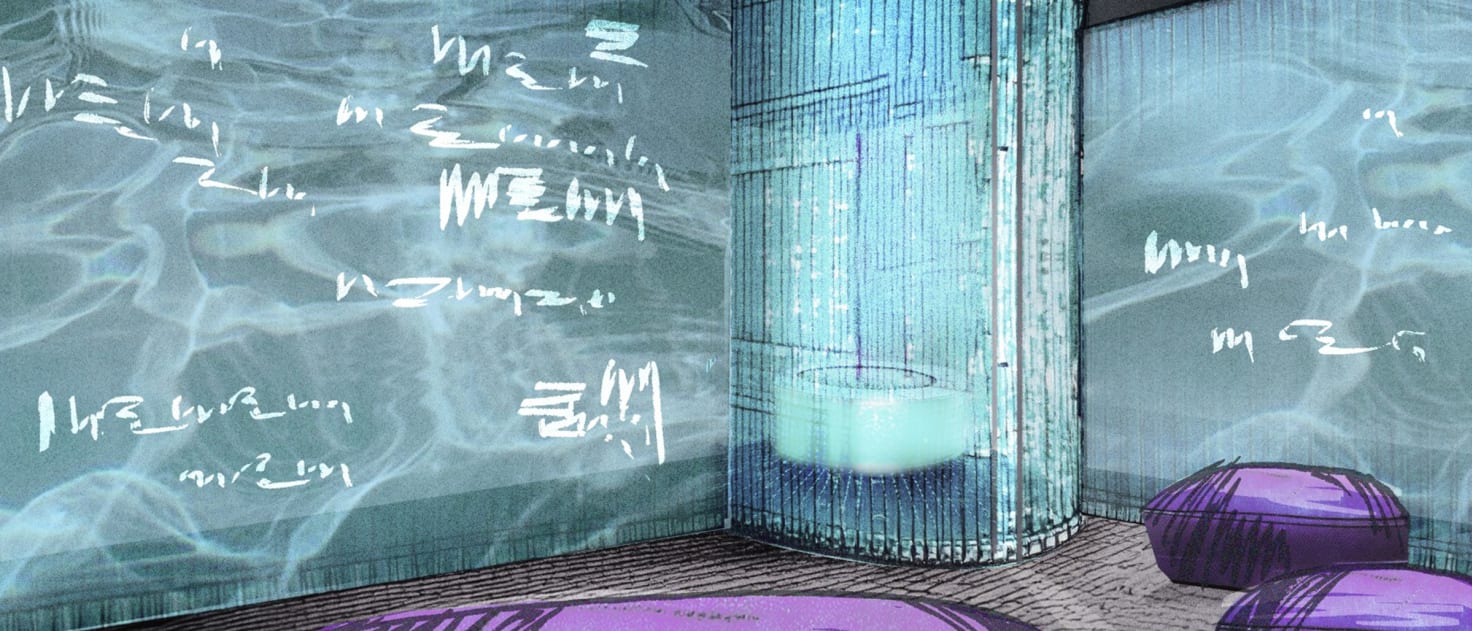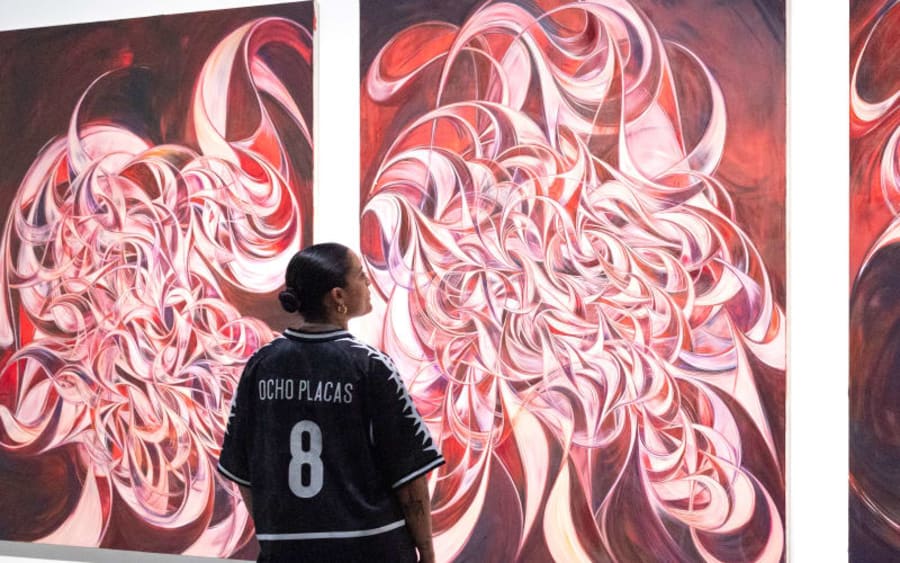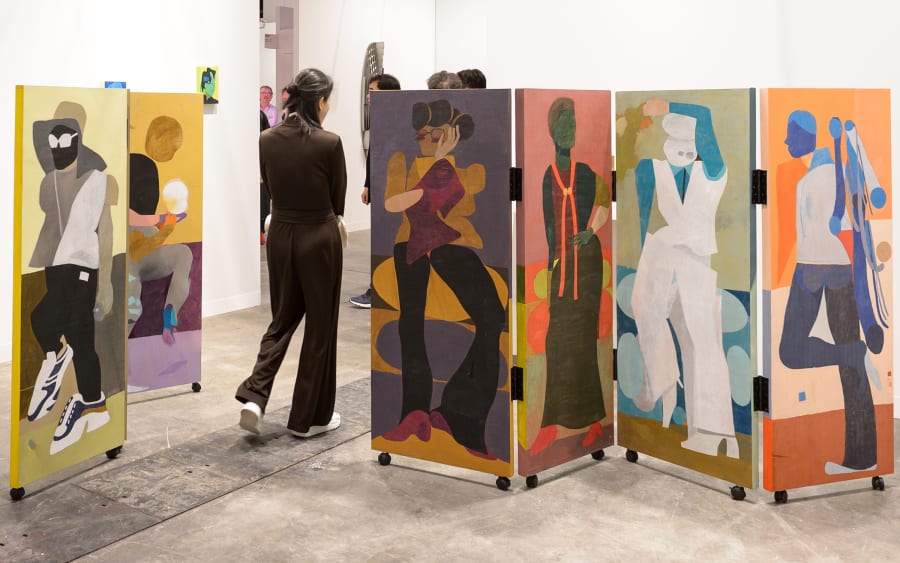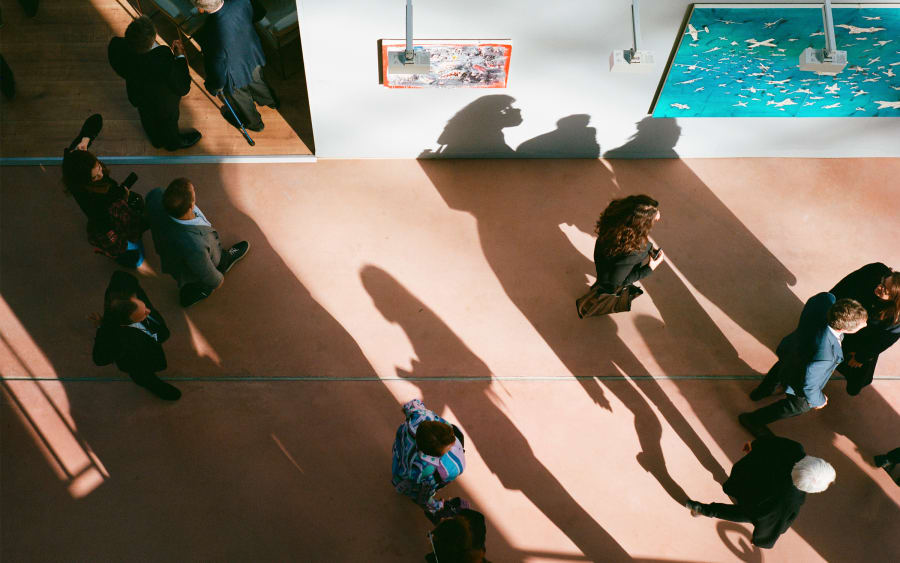
What remains when artists are gone?
Tracing the pathways of artistic inheritance, from creators to the museums and collectors who transform our understanding of legacy

What remains when artists are gone?
Tracing the pathways of artistic inheritance, from creators to the museums and collectors who transform our understanding of legacy

What remains when artists are gone?
Tracing the pathways of artistic inheritance, from creators to the museums and collectors who transform our understanding of legacy

What remains when artists are gone?
Tracing the pathways of artistic inheritance, from creators to the museums and collectors who transform our understanding of legacy

What remains when artists are gone?
Tracing the pathways of artistic inheritance, from creators to the museums and collectors who transform our understanding of legacy
By Elliat Albrecht
Chubb – a leader in art and legacy insurance – has created a ‘wishing well’ for this year’s Art Basel Hong Kong, inviting visitors to share their thoughts on the question, ‘If one day you are no longer here, what is your wish?’ It’s a fitting one to pose to the art world, which perpetually negotiates the boundary between remembrance and reinvention.
Six summers ago, the Museu Picasso de Barcelona staged a provocative exhibition. Titled ‘In the Name of the Father’, the group show featured contemporary artworks that – whether indirectly or overtly – are linked to Picasso’s legacy. Rather than venerating the artist’s genius, the curators focused on the long, complicated shadow he cast. In one hair-raising performance titled The invisible other ones, Eulàlia Valldosera conducted a séance in the gallery to conjure the spirit of Picasso’s second wife and muse, Jacqueline, giving voice to a woman who was often eclipsed by her larger-than-life husband. It was a bold move for a museum built on the man’s myth, showing a rare willingness to confront the fact that artistic legacy can be a complex inheritance.
Legacy is the language that the past uses to communicate with the future. Whether it’s artists confronting what came before or collectors envisioning what will be left behind, the topic is ever-present across the art world.
Some of today’s most compelling artists confront historical legacies to redirect our attention to enduring wounds. Alfredo Jaar’s installation The Geometry of Conscience (2010) offers a stark meditation on the lingering effects of Chile’s Pinochet dictatorship by using an optical trick that leaves images in viewers’ eyelines even after they’ve turned away from the piece – creating a visceral connection between past and present. Kader Attia’s film Reflecting Memory (2016) explores colonialism’s lingering wounds by way of phantom limb syndrome, in which amputees still feel sensation where their lost body parts used to be, similarly pointing to the way the past imprints on the body.
Painters bear one of the weightiest inheritances, as their medium stretches the farthest back in time. Centuries of art history’s hand-me-downs greet every painter at the studio door. Some embrace this lineage while subverting its exclusionary traditions. The New York-based Pakistani painter Salman Toor, for instance, blends the past with the personal by drawing on Old Master techniques to depict the lives of queer South Asian men. Others, like Kehinde Wiley, Amy Sherald, and Lynette Yiadom-Boakye, remix the language of classical European portraiture to create powerful depictions of contemporary Black subjects, challenging art history’s exclusionary gaze while claiming its formal traditions.
In Hong Kong, artists forge connections between personal and cultural legacies. Leung Chi Wo unearths buried details from the region’s sociopolitical past through highly coded sculptures and photographs, while Howie Tsui reimagines the goings-on inside the notorious Kowloon Walled City through the mythic lens of wuxia, a popular genre of Chinese martial arts storytelling. Chow Chun Fai – a classically trained oil painter – renders recognizable film stills from Hong Kong’s cinematic golden age with realist techniques that hark back to the Renaissance. Each artist becomes both inheritor and interpreter of what came before.
While some artists examine the past, collectors and institutions determine what will physically endure into the future. As arbiters of cultural memory, museums hold the power to determine what lasts, influencing which voices will be heard and which will fade into obscurity. The choices made today shape tomorrow’s understanding of our time.
The American collector and curator Suzanne Deal Booth takes her custodial responsibility literally, leveraging her extensive expertise in art restoration to meticulously preserve the works she acquires, guaranteeing their longevity. The Norwegian collector Nicolai Tangen is also looking to the future. Over 30 years, the financier amassed an impressive collection of Nordic art, and in 2015 donated the collection of over 5,000 works to his hometown of Kristiansand, where it became the cornerstone of the newly established Kunstsilo museum – a gift now accessible to all. ‘Having spent so much time and effort building something like this, I just didn’t think it belonged to my kids,’ he shared in an interview with Art Basel.
Tangen’s gift represents a profound understanding that legacy has no future unless it’s shared. This wisdom has fueled a movement among private collectors who are opening their collections to the public, creating spaces where art can be shared and experienced by a wider audience. This trend is reflected in institutions such as The Broad in Los Angeles, Zeitz MOCAA in Cape Town, and the Museum of Old and New Art in Tasmania. Art history, after all, is never a one-way street – legacy has no future unless it’s passed onto others. Hiding it away ensures its end.
No matter where the art ends up living, a collection always outlives the collector. It’s a reflection of what someone cared about while they were here. It’s proof that they lived, were touched by beauty or meaning, and could be so taken by something that they had to stop and look twice. And then three times. And then had to preserve it, so they could look at it forever, and so that others could look at it too, even when the collector wasn’t there anymore.
When we collect, when we create, when we curate, we’re making a wish about how we will be remembered. But only the people we leave behind will know if it comes true. The most meaningful legacies may be those that remain open to reinterpretation – inviting future generations not just to remember, but to respond.
Taboos hold us back from having the most important conversations in life – the ones about the legacies we leave behind. At Art Basel Hong Kong, Chubb Life is shifting conversations around death from taboo to transformative as the insurer inspires people to think, talk, and reflect on their final wishes.
Chubb Life asks people to manifest their most important intentions through a wishing well activation that takes visitors through a personal journey of reflection. Like art, these intentions leave ripples long after we’re gone – because every word and action we take today shapes the legacy we leave behind.
Elliat Albrecht is a writer and editor based in Canada.
Caption for header image: Rendering of the Chubb Life Lounge at Art Basel Hong Kong by Tio Fung.
Published on March 19, 2025.



